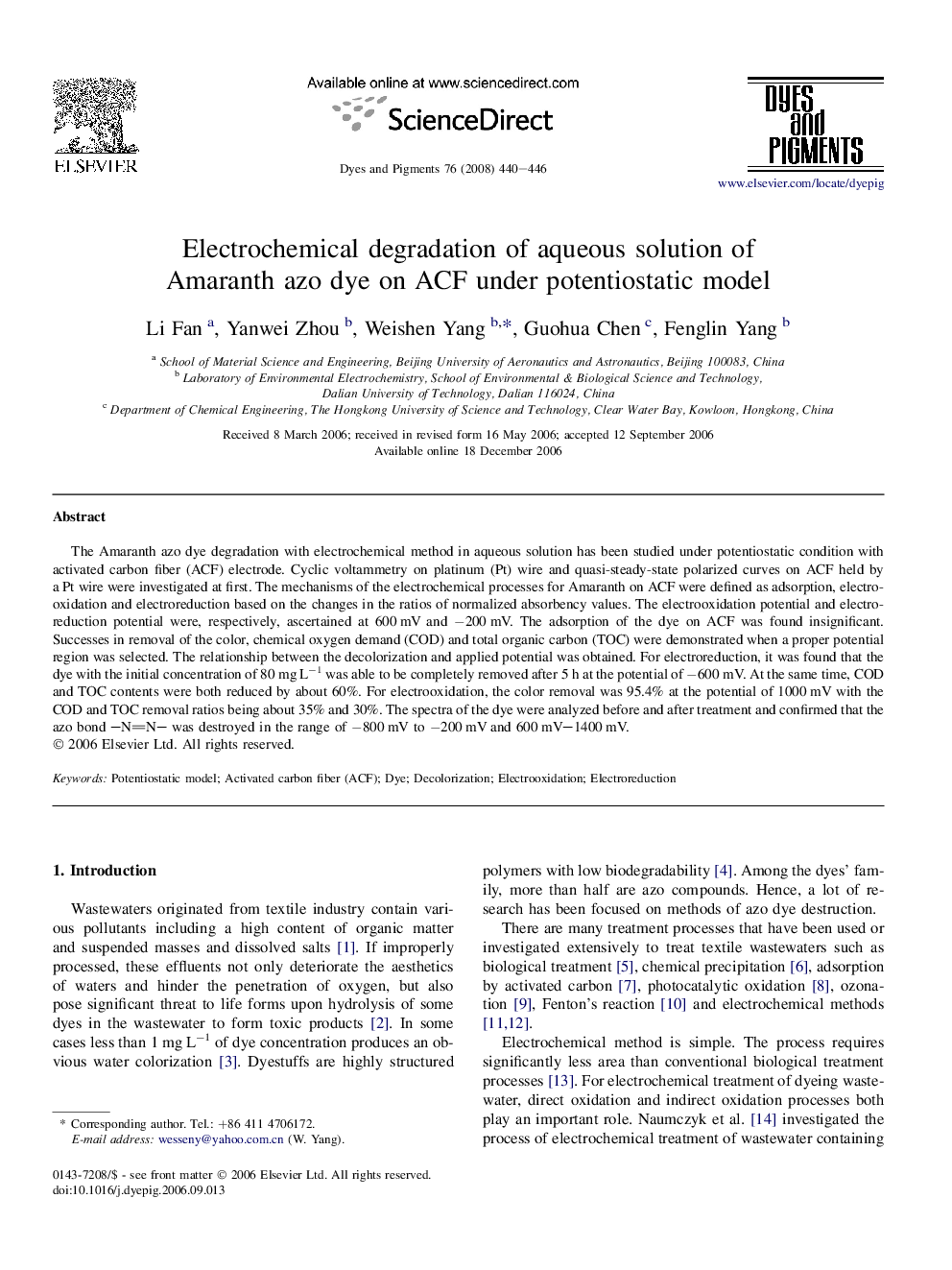| Article ID | Journal | Published Year | Pages | File Type |
|---|---|---|---|---|
| 178301 | Dyes and Pigments | 2008 | 7 Pages |
The Amaranth azo dye degradation with electrochemical method in aqueous solution has been studied under potentiostatic condition with activated carbon fiber (ACF) electrode. Cyclic voltammetry on platinum (Pt) wire and quasi-steady-state polarized curves on ACF held by a Pt wire were investigated at first. The mechanisms of the electrochemical processes for Amaranth on ACF were defined as adsorption, electrooxidation and electroreduction based on the changes in the ratios of normalized absorbency values. The electrooxidation potential and electroreduction potential were, respectively, ascertained at 600 mV and −200 mV. The adsorption of the dye on ACF was found insignificant. Successes in removal of the color, chemical oxygen demand (COD) and total organic carbon (TOC) were demonstrated when a proper potential region was selected. The relationship between the decolorization and applied potential was obtained. For electroreduction, it was found that the dye with the initial concentration of 80 mg L−1 was able to be completely removed after 5 h at the potential of −600 mV. At the same time, COD and TOC contents were both reduced by about 60%. For electrooxidation, the color removal was 95.4% at the potential of 1000 mV with the COD and TOC removal ratios being about 35% and 30%. The spectra of the dye were analyzed before and after treatment and confirmed that the azo bond –NN– was destroyed in the range of −800 mV to −200 mV and 600 mV–1400 mV.
